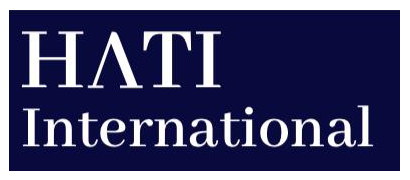Crucial Use Cases of RPA in Healthcare that You Can’t Overlook
The healthcare industry is a highly complex, regulated, and evolving industry. The proliferation of new technologies and rapid move towards smart hospitals have introduced a new set of opportunities and challenges.
Healthcare organizations are under tremendous pressure to adopt new technologies, improve the quality of care, offer personalized healthcare while keeping the costs down.
Automation of mundane processes is one of the fastest ways to go about increasing hospital efficiencies, and that justifies the increased interest in Robotic Process Automation or RPA.
RPA enables healthcare organizations to get rid of several manual processes, activities, and tasks. The advanced software takes the fastest route for handling and processing large chunks of information from varied systems or data sources. As a result, it can accomplish tasks quickly and reduces errors along the way.
RPA in Healthcare
To put it simply, Deloitte claims that a successful RPA integration could lead to accomplishing more tasks with fewer people. The remaining employees could focus on healthcare-related tasks such as patient care, the previously stated hospital triage, and research in clinical facilities.
It also states that between 51 and 60% of hospitals could see negative margins by 2025 if they are unable to achieve productivity growth.
This indicates that moving forward, healthcare organizations can’t continue using the legacy systems but have to make way for RPA inclusion compulsorily. The smart bots will work independently, solving everyday complexities, reducing time-consuming tasks, and adding to the enhanced quality of patient care.
While there are several avenues where RPA can transform healthcare, here we have selected a few to help you get an idea about the vast potential of RPA in healthcare.
In no particular order, these are:
Claims Management
According to statistics, almost 91.2% of Americans have health insurance coverage. That is a considerable number that hints at too many processes that are needed for completing the entire claim procedure. At present, the entire process of claims management is only partially automated, and that leads to bottlenecks. When handled manually, multiple steps in the process can go wrong and take a toll on healthcare organizations.
RPA helps optimize the information or data for claims processing, guaranteeing 100% accuracy – from filing the claims, filtering the data, and paying the funds to the claimants. Think of a situation wherein RPA bots can assist professionals in spending less time on repetitive processes and working independently on information collected from various sources that are available across multiple systems.
These bots also reduce the steps that take place in the process leading to reduced labor costs. In fact, claims processing can speed up due to automatic validation of patient data and submissions as the RPA systems can run 24/7/365, bringing more productivity and fewer delays to the table.
This is how various healthcare organizations can reduce all the past backlogs in the claims department.
Population Health Plan Management
Defined by Kings Fund, UK, Population Health is – an approach aimed at improving the health of an entire population. It is about improving the physical and mental health outcomes and wellbeing of people within and across a defined local, regional, or national population, while reducing health inequalities.
To serve the purpose, healthcare organizations need to offer improved access to care to patients in real-time, without any scope of negligence. Together with the government agencies, they need to offer the entire population the best healthcare system on their fingertips.
Automation can help healthcare institutions address the massive scale of population health plans by making them feasible, scalable, and sustainable. This improves the track record of the organizations and at the same time, fosters improved patient engagement and better patient care.
Crucial Healthcare Workflows
Healthcare organizations involve several complex workflows. These include various use cases such as remote monitoring, case and utilization management, healthcare operations management, inventory management, etc. It is a given that the workflows are critical to the healthcare facilities and involve multiple stakeholders with different access levels. As a result, these need to be tailored, keeping the needs of the patients and the providers at the forefront.
The catch? Well, when these workflows are managed manually, it leads to inefficiencies and, therefore, errors.
RPA can help improve the situation with automated workflows that pave the way for enhanced operational efficiencies. It enables seamless patient information for all the points of care, helping timely relay of information by making it available and accessible to all the concerned stakeholders. This, in turn, reduces information inaccuracies that are a result of manual intervention. All in all, automated workflows facilitated by RPA contribute to the superior quality of patient care by reducing multiple iterative tasks. This also helps save time and costs for healthcare providers.
Audit Process
Auditing in healthcare is another critical process, without which hospitals can potentially become financially distressed or in the worst case, become bankrupt. The audits are also important for attaining objectives such as ensuring patient safety as well as providing high-quality services consistently.
RPA can be a game-changer here – it can take care of multiple tasks involved in the auditing process. Moreover, it can help generate actionable reports with greater accuracy, which are a must-have for regulatory compliance apart from serving the audit purposes.
Join the Conversation
RPA saves healthcare organizations and patients from agony. Implemented correctly, it can lead to a future where there are no more claim denials due to errors in the records or delays in booking an appointment with a preferred healthcare expert. Moving from a labor-intensive process to complete automation is already taking place with certain healthcare firms adopting this approach and taking the next big leap.




